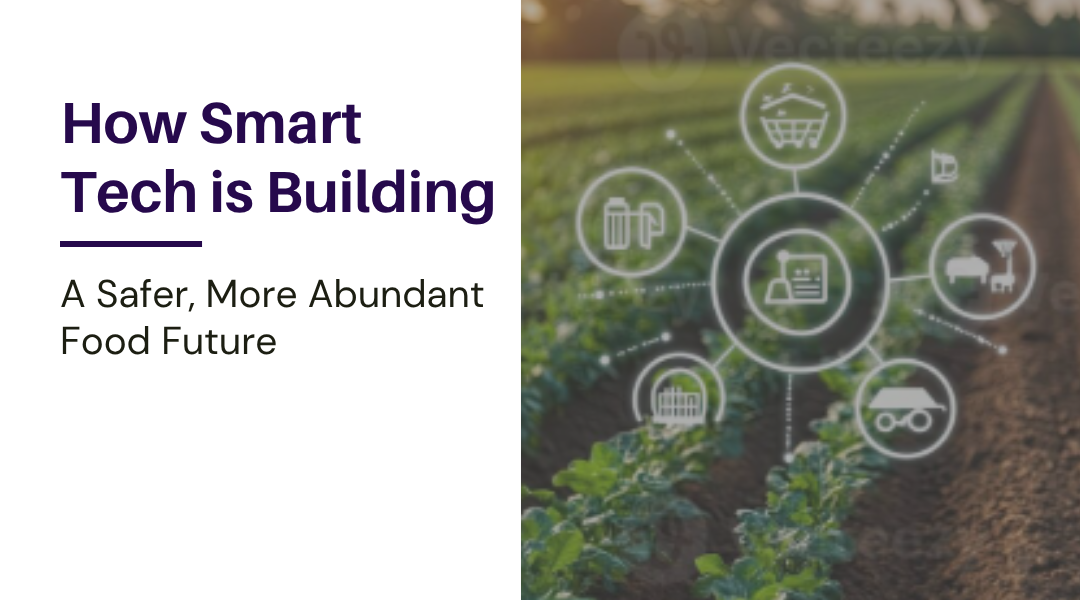In a world of climate volatility and growing populations, ensuring every person has access to safe, nutritious food is one of humanity’s greatest challenges. While not a magic bullet, intelligent technology is emerging as a powerful ally in this fight, offering new ways to protect what we grow and get it to those who need it most.
Curbing the Great Waste: A Smarter Supply Chain
Perhaps the most immediate impact of AI is in tackling the staggering global problem of food waste. It’s not just about growing more; it’s about losing less.
- The Predictive Harvest: For a mango exporter in India, the ripening window is perilously short. New AI systems now analyze satellite imagery of orchard color, local weather patterns, and even historical traffic data to predict the optimal harvest day for each orchard block. This allows them to coordinate with packing houses and refrigerated transport with precision, slashing the amount of fruit that ripens too quickly on a truck. This isn’t just efficiency; it’s rescuing nutrition that would otherwise be lost.
- The Intelligent Grocery Aisle: Major retailers are now piloting “smart shelves” in the fresh produce section. Using weight sensors and tiny cameras, these systems can detect when a batch of strawberries is starting to look less appealing. Instead of waiting for them to spoil, the system can automatically alert staff to mark them down for quick sale or flag them for donation, dramatically reducing in-store waste.
The Invisible Guardian: Reinventing Food Safety
Beyond waste, AI acts as a relentless, hyper-vigilant inspector, making our food safer from contamination.
- The Eagle-Eyed Processor: In a poultry processing plant, traditional human inspectors have a split second to spot defects on a conveyor belt moving at high speed. AI-powered vision systems, however, can analyze thousands of images per second, detecting microscopic traces of contaminants like salmonella or foreign objects that are invisible to the naked eye. This moves food safety from a sampling-based check to a comprehensive, 100% inspection system.
- Outbreak Forensics: When people get sick from food, speed is critical. Health agencies are now using AI to sift through millions of data points—from grocery loyalty card records to social media mentions of illness—to pinpoint the source of a foodborne outbreak in days instead of weeks. By connecting seemingly unrelated cases, these systems can identify a contaminated batch of lettuce before it spreads across the entire country, saving lives and preventing costly, widespread recalls.
Fortifying the Farm: Boosting Resilience and Yield
The journey to food security begins long before the harvest, and AI is helping farmers navigate increasing uncertainty.
- The Autonomous Orchard Scout: In Washington’s apple orchards, farmers are deploying autonomous rovers that roam the rows at night. Using multispectral cameras and AI, they create a daily health map of every single tree, identifying the earliest signs of fire blight—a devastating bacterial disease—often days before a human scout could see it. This allows for the surgical removal of infected branches, saving the orchard without blanket antibiotic sprays.
- Hyper-Efficient Irrigation: In drought-stricken regions, AI is doing more than scheduling water. It’s creating a dynamic conversation between the soil, the crop, and the sky. For instance, in California’s Central Valley, systems now combine data from underground soil probes with real-time evapotranspiration rates and hyper-local weather forecasts to determine not just if a field needs water, but exactly how much each zone can absorb without percolating past the root zone, conserving every precious drop.
Navigating the Hurdles: Equity and Understanding
This promising future is not without its caveats. The high cost of technology risks creating a two-tier system where only large, wealthy farms can afford these advanced tools. We must champion inclusive models, like farmer-owned cooperatives that pool resources to purchase and share technology.
Furthermore, we cannot replace the farmer’s intuition with a “black box” algorithm. The most successful systems are those designed to explain their reasoning. A tool must be able to tell a farmer, “I’m recommending less fertilizer in this zone because the soil organic matter is high and the yield data from the last three years shows it’s sufficient,” thereby building trust through transparency.
Conclusion: A Tool, Not a Tyrant
The ultimate role of AI in our food system is not to create sterile, fully automated farms run by robots. It is to augment human skill and deepen our connection to the land’s complexity. By handing over the tasks of relentless monitoring and massive data crunching to machines, we free up farmers to do what they do best: make nuanced decisions, manage ecosystems, and steward their land for future generations.
When deployed wisely and equitably, this technology offers a path to a more resilient food future—one with less waste, fewer safety scares, and a greater ability to withstand the shocks of a changing planet. It’s about building a system where technology serves the soil, the farmer, and the consumer, ensuring that abundance and safety travel together from field to fork.
